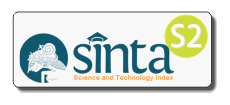Testing the conditional correlations and volatility spillovers between US and ASEAN Islamic stock markets: A Multivariate GARCH Analysis
DOI:
https://doi.org/10.14421/grieb.2014.021-03Keywords:
Islamic Stock Markets, Conditional Correlations, Volatility Spillovers, Multivariate GARCH, BEKK, ASEANAbstract
This study examines the conditional correlations and volatility spillovers between the US and ASEAN Islamic stock markets. The empirical design uses MSCI (Morgan Stanley Capital International) Islamic indexes as it adopted stringent restriction to include companies in sharia list. By using a three multivariate GARCH models (BEKK, diagonal VECH, and CCC model), we find evidence of returns and volatility spillovers from the US to the ASEAN Islamic stock markets. However, as the estimated time-varying conditional correlations and volatilities indicate there is still a room for diversification benefits, particularly in the single markets. The Islamic MSCI of Thailand, Indonesia, and Singapore are less correlate to the US MSCI Islamic index. The implication is that foreign investors may benefit from the reduction of risk by adding the Islamic stocks in those countries.Downloads
 Abstract viewed: 594 times
|
Abstract viewed: 594 times
|
 PDF downloaded = 626 times
PDF downloaded = 626 times
References
Bahlous, M., & Yusof, R. M. (2014). International diversification among Islamic investments: is there any benefit. Managerial Finance 40(6), 613-633
Beirne, J., Guglielmo, M., Caporale, M., Schulze-Ghattas, M., & Spagnolo, N. (2009). Volatility spillovers and contagion from mature to emerging stock markets. European Central Bank WP No 1113
Bollerslev, T., Engle, R. F., & Wooldridge, J. M. (1988). A capital asset pricing model with time-varying covariances. Journal of Political Economy, 96(1), 116-131
Bollerslev, T. (1990). Modeling the coherence in the short run nominal exchange rates: A multivariate generalised ARCH approach. Review of Economics and Statistics, 72(3), 498-505
Brooks,C. (2008). Introductory Econometric for Finance. New York: Cambridge University Press
Brooks, C., Henry, O. T., & Persand, G. (2002). The effect of asymmetric on optimal hedge ratios. Journal of Business 75(2), 333-352
Cha, H. J. & Jithendranathan, T. (2009). Time-varying correlations and optimal allocation in emerging market equities for the US investor. International Journal of Finance and Economics 14, 172-187
Click, R. W., & Plummer, M. G. (2005). Stock market integration in ASEAN after the Asian financial crises. Journal of Asian Economics 16, 5-28
Derigs, U., & Marzban, S. (2008). Review and Analysis of Current Shariah-Compliant Equity Screening Practices. International Journal of Islamic and Middle Eastern Finance and Management, 1(4), 285-303.
Dungey, M., Fry, R., Gonzalez, B., & Martin, V, L. (2007). Contagion in global equity markets in 1998: The effects of the Russian and LTCM crises. North American Journal of Economics and Finance, 18(2), 155-174
Engle, R. F., & Kroner, K. (1995). Multivariate simultaneous GARCH. Econometric Theory 11(1), 122-150
Goldstein, M., & Michael,M. (1993). The integration of world capital markets. IMF working paper. Washington DC: International Monetary Fund.
Hamao, Y., Masulis,R.W., & Ng,V. (1990). Correlations in price changes and volatility across international stock markets. Review of Financial Studies, , 281-307
Karoly, G.A., & Stulz, R. M. (1996). Why do markets move together? An investigation of US-Japan stock return comovements. Journal of Finance, 51, 951-986
Levy,H., & Sarnat, M. (1970). International diversification in investment portfolios. American Economic Review, 60, 668-675
Lin,W., Engle, R.F., & Ito, T. (1994). Do bulls and bears move cross borders? International transmission of stocks returns and volatility. Review of Financial Studies, 7, 507-538
Majdoub, J., & Mansour, W. (2014). Islamic equity market integration and volatility spillover between emerging and US stock markets. North American Journal of Economic and Finance 29, 452-470
Masih, A. M. M., & Masih, R. (1997). A comparative analysis of the propagation of stock market fluctuations in alternative models of dynamic causal linkages. Applied Financial Economics, 7, 59-74
Meric,G., & Meric, I. (1997). Co-movements of European equity markets before and after the 1987 crash. Multinational Finance Journal, 1(2), 137-154
Miyakoshi, T. (2003). Spillovers of stock return volatility to Asian equity markets from Japan and the US. International Financial Markets, Institution and Money, 13, 383-399
MSCI. (2014). MSCI Islamic Index Series Methodology. New York: MSCI
Ng, S. (2000). Volatility spillovers effects from Japan and the US to the Pacific Basin. Journal of International Money and Finance. 19(2), 207-233
Rahman, A. A, Yahya, A., & Nasir, M. H. D. (2010). Islamic Norms for Stock Screening: A Comparison between the Kuala Lumpur Stock Exchange Islamic Index and the Dow Jones Islamic Market Index. International Journal of Islamic and Middle Eastern Finance and Management, 3(3), 228-240.
Rahman, A. A., & Sidek, N. Z. M. (2011). Spillovers effect of US subprime crises on ASEAN-5 stocks markets. Business and Social Science Research Conference (p. 334). Dubai, UAE: World Business Institute Australia.
Sadorsky, P. (2012). Correlations and volatility spillovers between oil prices and the stock prices of clean energy and technology companies. Energy Economics 34, 248-255
Saiti, B., et al. (2014). The diversification benefits from Islamic investment during the financial turmoil: the case for the US-based equity investors. Borsa Istanbul Review (submitted for publication)
Securities Commission. (2009). Islamic Equity Market. Kuala Lumpur: LexisNexis
Sukmana,R., & Kolid,M. (2012). Impact of global financial crisis on Islamic and conventional stocks in emerging market: an application of ARCH and GARCH method. Asian Academy of management Journal of Accounting & Finance (submitted for publication)
Thomson Reuters. (2013). Global Islamic Asset Management Report 2014. New York: Lipper & Thomson Reuters
Usmani, M. Taqi. (1998). An Introduction to Islamic Finance. Karachi: Idaratul Ma'arif.
Wang, S.S., & Firth, K. (2004). Do bears and bulls swim across oceans? Market information transmission between Greater China and the rest of the world. Journal of International Financial Markets, Institution and Money, 14, 235-254
Yaquby, N. (2000). Participation and Trading in Equities of Companies Which Main Business Is Primarily Lawful but Fraught with Some Prohibited Transactions. Paper presented at the Fourth Harvard Islamic Finance Forum- Islamic Finance: The Task Ahead., Harvard University, Cambridge.
Downloads
Published
Issue
Section
License
Global Review of Islamic Economics and Business is licensed under a
Creative Commons Attribution-ShareAlike 4.0 International License



















